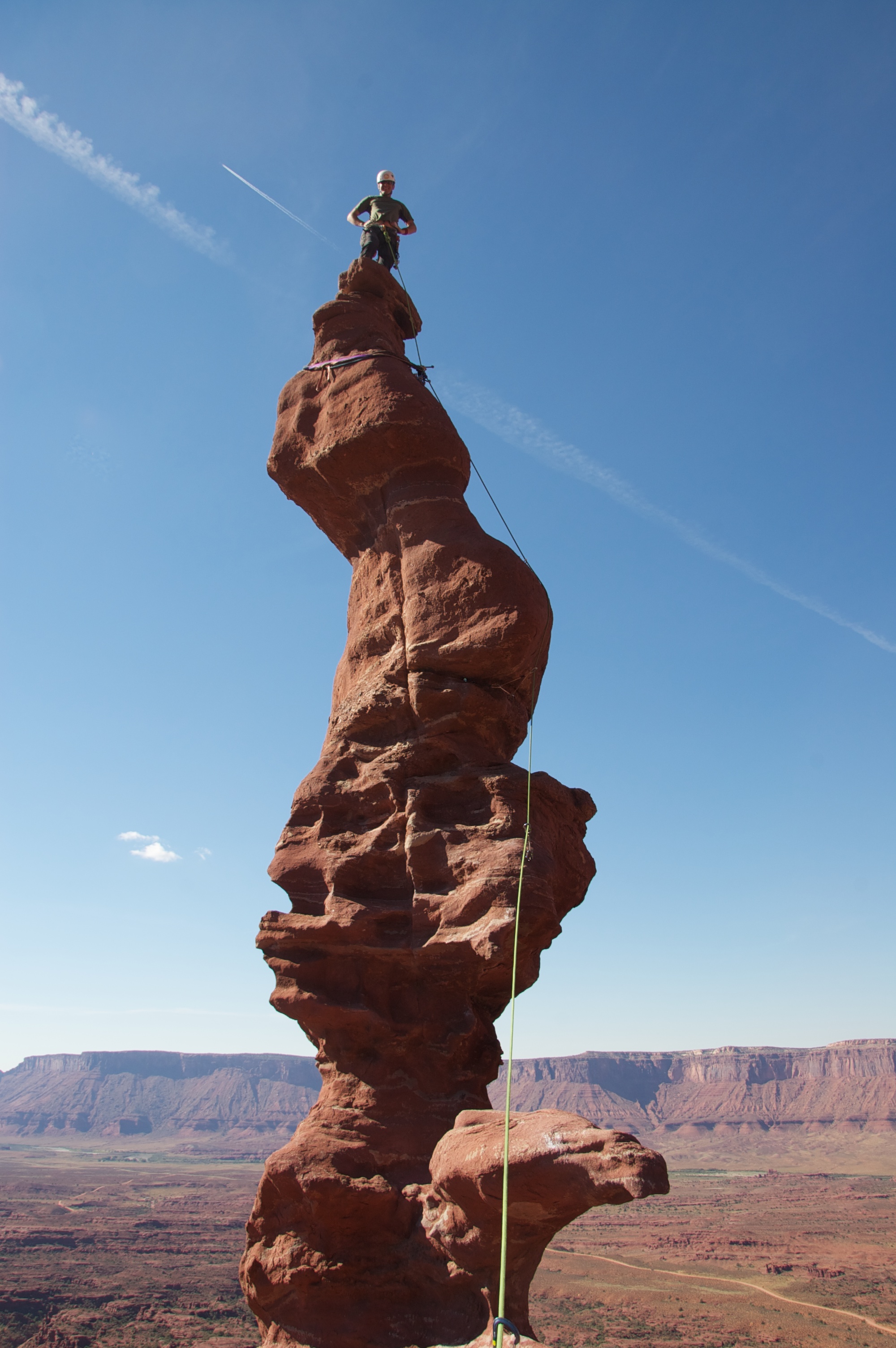Exposure (heights) on:
[Wikipedia]
[Google]
[Amazon]

 Exposure is a
Exposure is a

 Exposure is a
Exposure is a climbing
Climbing is the activity of using one's hands, feet, or other parts of the body to ascend a steep topographical object that can range from the world's tallest mountains (e.g. the eight thousanders) to small boulders. Climbing is done for locom ...
and hiking
A hike is a long, vigorous walk, usually on trails or footpaths in the countryside. Walking for pleasure developed in Europe during the eighteenth century. Long hikes as part of a religious pilgrimage have existed for a much longer time.
"Hi ...
term. Sections of a hiking path or climbing route
A climbing route () is a path by which a Climbing, climber reaches the top of a mountain, a rock face or an ice-covered obstacle. The details of a climbing route are recorded in a climbing guidebook and/or in an online climbing-route database. De ...
are described as "exposed" if there is a high risk of injury in the event of a fall because of the steepness of the terrain. If such routes are negotiated without any protection, a false step can result in a serious fall.
The negotiation of such routes can cause fear of falling
The fear of falling (FOF), also referred to as basophobia (or basiphobia), is a natural fear and is typical of most humans and mammals, in varying degrees of extremity. It differs from acrophobia (the fear of heights), although the two fears are ...
because of the potential danger.
Definitions
What constitutes exposure on a path is fairly obvious, however, an "exposed" location or section of a climbing route is not uniformly or clearly defined in the literature. There are no threshold values, for example, based on the gradient of the terrain, the height of rock faces or the character of a ridge orarête
An arête ( ; ) is a narrow ridge of rock that separates two valleys. It is typically formed when two glaciers erode parallel U-shaped valleys. Arêtes can also form when two glacial cirques erode headwards towards one another, although frequ ...
. Authors tend to use their own definition of the terms "exposure" or "exposed" when describing routes, for example:
Exposure
* "''The distance from the climber to where the climber would likely stop in the event of an unprotected fall.''" * "''Being very far above your last piece of protection or being in a situation in which you are very aware that you are high off the ground or in a remote location.''" * "''The existence of a formidable amount of empty space along a line drawn between the climber and the center of the earth. Similarly, a climb possessing exposure is said to be "exposed." Exposure is the spice of rock climbing. On an exposed pitch a beginner is likely to be needlessly frightened. The experienced climber, however, with many years of experience to steady his nerves, will be calm and level headed throughout the proceedings until he is asked to try the climb himself.''"Exposed
* "A route that has parts that remind you of how far up you are and with how little gear." * "The kind of position where you suddenly realise how far away the ground has become; a route or move that takes you into such a position."Medical and psychological aspects
"Exposed" sections of a path or a route can causefear
Fear is an unpleasant emotion that arises in response to perception, perceived dangers or threats. Fear causes physiological and psychological changes. It may produce behavioral reactions such as mounting an aggressive response or fleeing the ...
as well as serious problems for climbers and walkers in mountainous terrain if they lack a head for heights
To have a head for heights means that one has no acrophobia (irrational fear of heights), and is also not particularly prone to fear of falling or suffering from vertigo (the spinning sensation that can be triggered, for example, by looking down ...
. However, what may feel exposed to some people, may hardly affect others at all. In critical situations it is therefore necessary, either to turn back or to use a protective measure such as a rope; some paths have fixed ropes, chains, ladders, etc. The anxiety caused by the exposure reduces with habituation, but even experienced climbers often have to get used to heights again at the start of the climbing season.Pepi Stückl, Georg Sojer: ''Bergsteigen: Lehrbuch für alle Spielarten des Bergsteigens.'' page 26, Bruckmann, Munich, 1996,
See also
*Climbing protection
Rock-climbing equipment varies with the specific type of climbing that is undertaken. Bouldering needs the least equipment outside of climbing shoes, climbing chalk and optional crash pads. Sport climbing adds ropes, harnesses, belay dev ...
* Head for heights
To have a head for heights means that one has no acrophobia (irrational fear of heights), and is also not particularly prone to fear of falling or suffering from vertigo (the spinning sensation that can be triggered, for example, by looking down ...
* Hiking
A hike is a long, vigorous walk, usually on trails or footpaths in the countryside. Walking for pleasure developed in Europe during the eighteenth century. Long hikes as part of a religious pilgrimage have existed for a much longer time.
"Hi ...
* Scrambling
Scrambling is a mountaineering term for ascending steep terrain using one's hands to assist in holds and balance.''New Oxford American Dictionary''. It can be described as being between hiking and climbing, rock climbing. "A scramble" is a relat ...
* Sure-footedness
Sure-footedness is the ability, especially when hiking or mountain climbing, to navigate difficult or rough terrain safely. Such situations place demands on a person's coordination and reserves of strength as well as requiring sufficient appreciati ...
* Hazards of outdoor recreation
References
{{Climbing navbox Climbing and health Hiking Hazards of outdoor recreation Climbing terminology